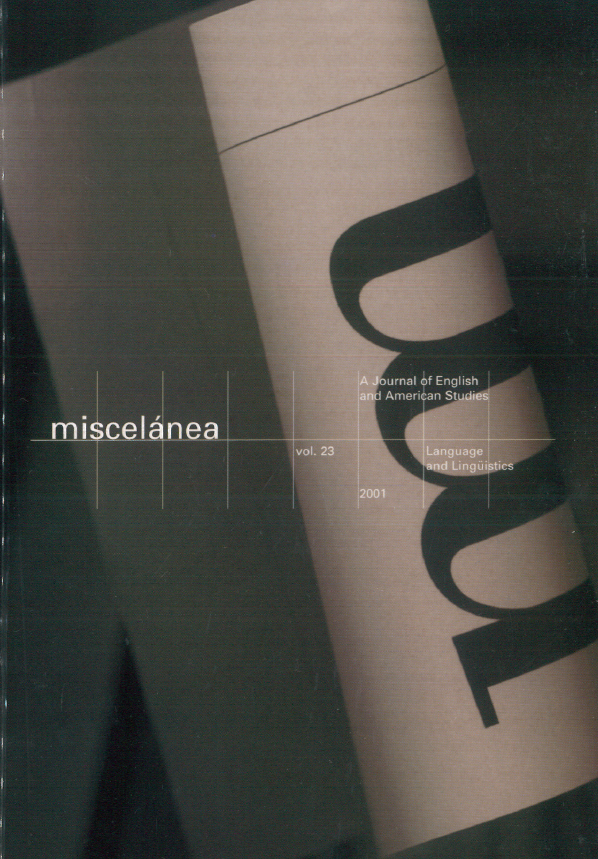The Directive-Commissive Continuum
DOI:
https://doi.org/10.26754/ojs_misc/mj.200110536Keywords:
theme, rheme, thematic progression, cohesive resources, semantic relationsAbstract
In recent years, linguistics has increasingly focused its interest on the realm of texts, trying to find in them links of a similar nature to those working in sentences. An important contribution in this respect was that of Danes (1974), who used the term “Thematic progression” to refer to the “choice and ordering of utterance themes” in a given passage. However, in my opinion, thematic progression only indicates the connections between the different textual segments without clarifying their nature. This article wishes to provide thematic progression with the necessary means to identify the relations established in a text, and for that purpose I will use both its cohesive resources (Halliday and Hasan 1976) and its semantic relations (Alcaraz 1982). The network we obtain is shown graphically with the help of an extended notation system.
Downloads
References
AUSTIN, John L. 1962. How to Do Things with Words. Oxford: Oxford U. P.
BACH, Kent AND Robert M. HARNISH. 1979. Linguistic Communication and Speech Acts. Cambridge, Mass.: The MIT Press.
HANCHER, Michael. 1979. “The Classification of Cooperative Illocutionary Acts”. Language in Society 8: 1-14.
LAKOFF, George. 1987. Women, Fire, and Other Dangerous Things. Chicago: The University of Chicago Press.
LEECH, Geoffrey. 1983. Principles of Pragmatics. New York: Longman.
RISSELADA, Rodie. 1993. Imperatives and Other Directive Expressions in Latin. A Study in the Pragmatics of a Dead Language. Amsterdam Studies in Classical Philology, 2. Amsterdam: J.C. Gieben Publisher.
ROSCH, Eleanor. 1978. “Principles of Categorization”. In Rosch, E. and B. Lloyd (eds.). Cognition and Categorization. Hillsdale, NJ: Lawrence Erlbaum: 27-48.
RUIZ DE MENDOZA, Francisco. J. 1999 “La ilocución y la gramática”. In Butler, C., Mairal, R.; Martín Arista, J. and F.J. Ruiz de Mendoza. Nuevas Perspectivas.en Gramática Funcional. Barcelona: Ariel Lingüística: 99-171.
SEARLE, JOHN R. (1969) 1979. “A Taxonomy of lllocutionary Acts”. In Searle, J.R. (ed.). Expression and Meaning. Studies in the Theory of Speech Acts. Cambridge: Cambridge U.P.: 1-29.
TSUI, Amy B.M. 1994. English Conversation. Oxford: Oxford U. P.
UNGERER, Friedrich AND Hans J. SCHMID. 1996. An Introduction to Cognitive Linguistics. New York, London: Longman.
VERSCHUEREN, Jeff. 1985. What People Say They Do with Words. Prolegomena to an Empirical-Conceptual Approach to Linguistic Action. Norwood, N.J.: Ablex Publishing Corporation.
WIERZBICKA, Anna. 1987. English Speech Act Verbs. A Semantic Dictionary. New York: Academic Press.
Downloads
Published
Issue
Section
License
Copyright (c) 2001 Lorena Pérez Hernández

This work is licensed under a Creative Commons Attribution-NonCommercial 4.0 International License.


